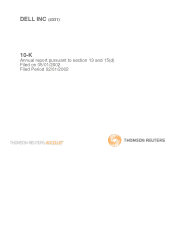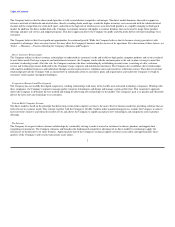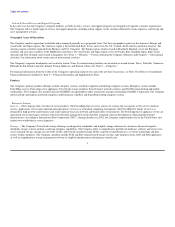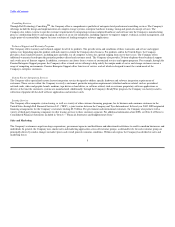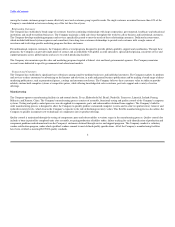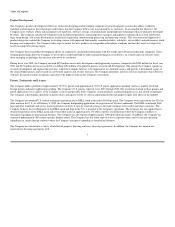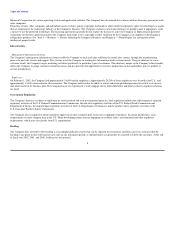Dell 2001 Annual Report Download - page 9
Download and view the complete annual report
Please find page 9 of the 2001 Dell annual report below. You can navigate through the pages in the report by either clicking on the pages listed below, or by using the keyword search tool below to find specific information within the annual report.
Table of Contents
among the various customer groups to more effectively meet each customer group's specific needs. No single customer accounted for more than 10% of the
Company's consolidated net revenues during any of the last three fiscal years.
Relationship Customers
The Company has established a broad range of customers based on continuing relationships with large corporations, governmental, healthcare and educational
institutions and small-to-medium businesses. The Company maintains a field sales force throughout the world to call on business and institutional customers.
The Company develops marketing programs and services specifically geared to meet the needs of these relationship customers. Dedicated account teams,
which include field-based system engineers and consultants, form long-term customer relationships to provide each customer with a single source of
assistance and to develop specific marketing programs for these customers.
For multinational corporate customers, the Company offers several programs designed to provide global capability, support and coordination. Through these
programs, the Company can provide single points of contact and accountability with global account specialists, special global pricing, consistent service and
support programs across global regions and access to central purchasing facilities.
The Company also maintains specific sales and marketing programs targeted at federal, state and local governmental agencies. The Company maintains
account teams dedicated to specific governmental and educational markets.
Transactional Customers
The Company has established a significant base of business among small-to-medium businesses and individual customers. The Company markets its products
and services to these customers by advertising on the Internet and television, in trade and general business publications and by mailing a broad range of direct
marketing publications, such as promotional pieces, catalogs and customer newsletters. The Company believes these customers value its ability to provide
reliable, custom-built computer systems at competitive prices, while offering knowledgeable sales assistance, post-sale support and a variety of service
offerings.
Manufacturing
The Company operates manufacturing facilities in and around Austin, Texas; Eldorado do Sul, Brazil; Nashville, Tennessee; Limerick, Ireland; Penang,
Malaysia; and Xiamen, China. The Company's manufacturing process consists of assembly, functional testing and quality control of the Company's computer
systems. Testing and quality control processes are also applied to components, parts and subassemblies obtained from suppliers. The Company's build-to-
order manufacturing process is designed to allow the Company to quickly produce customized computer systems and to achieve rapid inventory turnover and
reduced inventory levels, which lessens the Company's exposure to the risk of declining inventory values. This flexible manufacturing process also allows the
Company to quickly incorporate new technologies or components into its product offerings.
Quality control is maintained through the testing of components, parts and subassemblies at various stages in the manufacturing process. Quality control also
includes a burn-in period for completed units after assembly, on-going production reliability audits, failure tracking for early identification of production and
component problems and information from the Company's customers obtained through service and support programs. The Company conducts a voluntary
vendor certification program, under which qualified vendors commit to meet defined quality specifications. All of the Company's manufacturing facilities
have been certified as meeting ISO 9002 quality standards.
6

